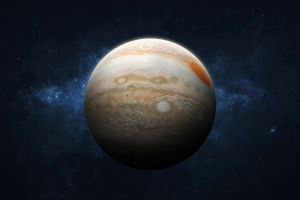The oceans cover over 70% of the Earth’s surface and provide vital resources, such as fish, seaweed, minerals, and renewable energy.
However, overexploitation has led to a decline in marine biodiversity and ecosystem health.
To preserve these resources for the future while meeting current needs, sustainable utilization is essential.
This means responsibly managing marine resources to balance human use with ecosystem conservation. Here’s how we can achieve sustainable marine resource use.
1. Understanding Sustainable Utilization
Sustainable utilization of marine resources ensures that these resources are used in ways that do not compromise their availability for future generations. The focus is on conservation, careful management, and sustainable harvesting practices that support economic, social, and ecological balance.
2. Sustainable Fishing Practices
Overfishing threatens marine ecosystems by depleting fish stocks, altering food chains, and damaging habitats. Sustainable fishing practices aim to mitigate these effects:
Catch Limits and Quotas: Science-based catch limits prevent overfishing by controlling how much of each species is harvested. This ensures fish populations remain healthy and can reproduce effectively.
Selective Fishing Gear: Gear that minimizes bycatch, like circle hooks and turtle excluder devices, reduces the unintended capture of non-target species, preserving marine biodiversity.
Marine Protected Areas (MPAs): MPAs restrict or ban fishing and other extractive activities, allowing marine populations and habitats to recover. These areas support healthy ecosystems and fish stocks that benefit fisheries beyond their boundaries.
3. Sustainable Aquaculture
Aquaculture is key to meeting seafood demand but can have environmental downsides, such as habitat destruction and pollution. Sustainable aquaculture practices focus on minimizing these impacts:
Integrated Multi-Trophic Aquaculture (IMTA): IMTA grows different species together—such as fish, shellfish, and seaweed—to create a balanced system where waste from one species becomes nutrients for another.
Low-Impact Farming Techniques: Using recirculating aquaculture systems (RAS) and offshore farming reduces environmental damage and habitat disruption. Sustainable feed practices, such as plant-based diets or using fish by-products, further minimize the ecological footprint.
4. Renewable Ocean Energy
The ocean provides potential for clean energy through wind, wave, and tidal power, which can be harnessed sustainably:
Offshore Wind Farms: Strategically placed offshore turbines can generate renewable electricity with minimal impact on marine life. Improved technology and site planning help reduce habitat disruption and noise pollution.
Tidal and Wave Energy: Tidal and wave energy devices convert ocean motion into power, offering a sustainable energy source. Ongoing research seeks to develop eco-friendly designs to minimize their impact on marine ecosystems.
5. Marine Conservation and Policy
Effective management of marine resources requires strong policies and collaboration across governments, communities, and organizations:
Marine Spatial Planning (MSP): MSP coordinates different marine activities to balance development and conservation, prevent user conflicts (e.g., fisheries, shipping), and protect sensitive habitats.
International Agreements: Agreements like the United Nations Convention on the Law of the Sea (UNCLOS) and Sustainable Development Goal 14 ("Life Below Water") set global standards for sustainable marine resource use, emphasizing conservation and biodiversity protection.
The sustainable use of marine resources is critical for ocean health, food security, and livelihoods.
By promoting sustainable fishing, responsible aquaculture, renewable energy use, and sound policies, we can balance human needs with ecological preservation.
A collaborative approach involving governments, industry, scientists, and communities is necessary to protect the oceans for future generations.


